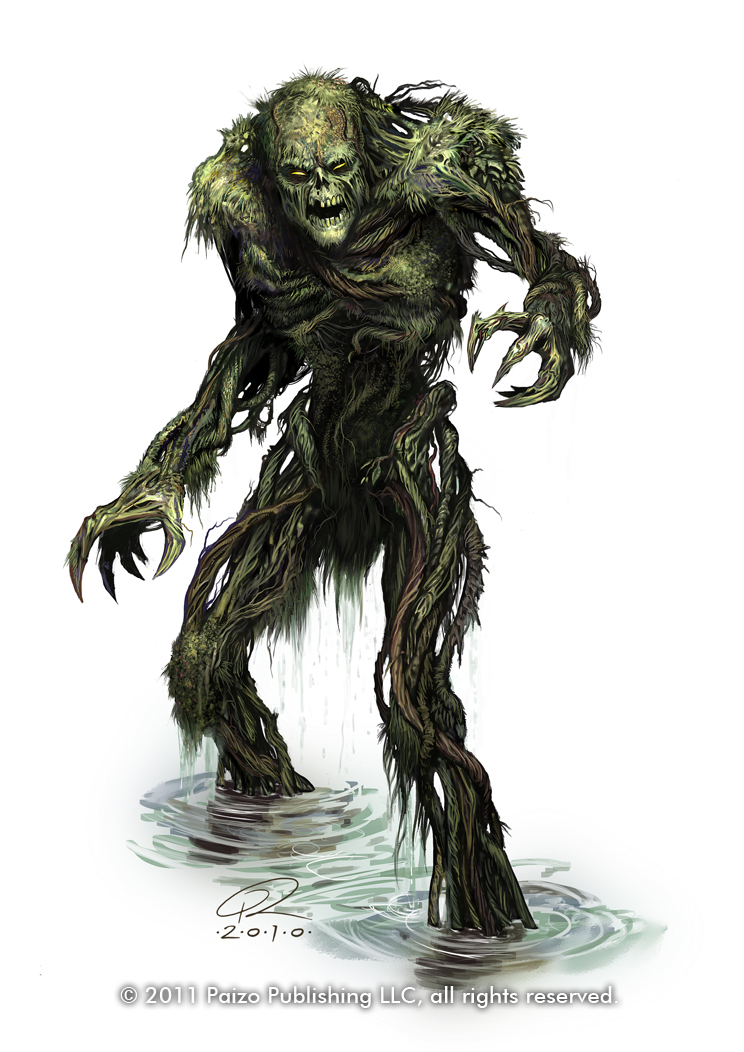Boruta
Borutas, also known as swamp lords, are ambulatory plant creatures distantly related to shambling mounds. They are renowned mystic protectors of Golarion's marshes and wetlands.1
Appearance
A boruta's skeletal wooden frame stands 7 feet tall and weighs about 300 pounds. They are covered in vines and moss, and have vibrant yellow eyes. While their verdant flesh is naturally green, it changes colors along with its surrounding plant life and seasons and darkens with age until its foliage is nearly black. Boruta life spans are long enough to be unknown to most mortals.1
Ecology
Borutas are born from pods of reeds and grasses that surface from swamps and caves. While very vulnerable during its two-year gestation period, a boruta that hatches from its pod is already a formidable young adult.
Borutas are born and live as solitary creatures and rarely encounter kin.1
Habitat and society
While strongly associated with swamps, borutas can inhabit any area dense with vegetation. They are very defensive of life in their territory—particularly plants—and interact socially with intruders only while wearing grass or peat moss to cover their often frightening forms. If any life in a boruta's territory is harmed, it retaliates, going so far as to wage long campaigns against encroaching settlements or ongoing violation.
Among humanoids, only druids tend to regard borutas with any degree of social geniality; even so, most direct other humanoids away from boruta-protected lands. Even arboreal regents avoid borutas despite their similarities in form and mission, and regard their often darker tactics with some disdain. Most goodly fey also avoid them, though neutral fey greatly respect borutas.
In most places, borutas' only allies are shambling mounds, which borutas view as primitive relatives and tribesfolk. Groups of borutas and shambling mounds readily work together to drive off threats and intruders.1
References
- ↑ 1.0 1.1 1.2 1.3 . “Bestiary” in Trial of the Beast, 84–85. Paizo Inc., 2011
